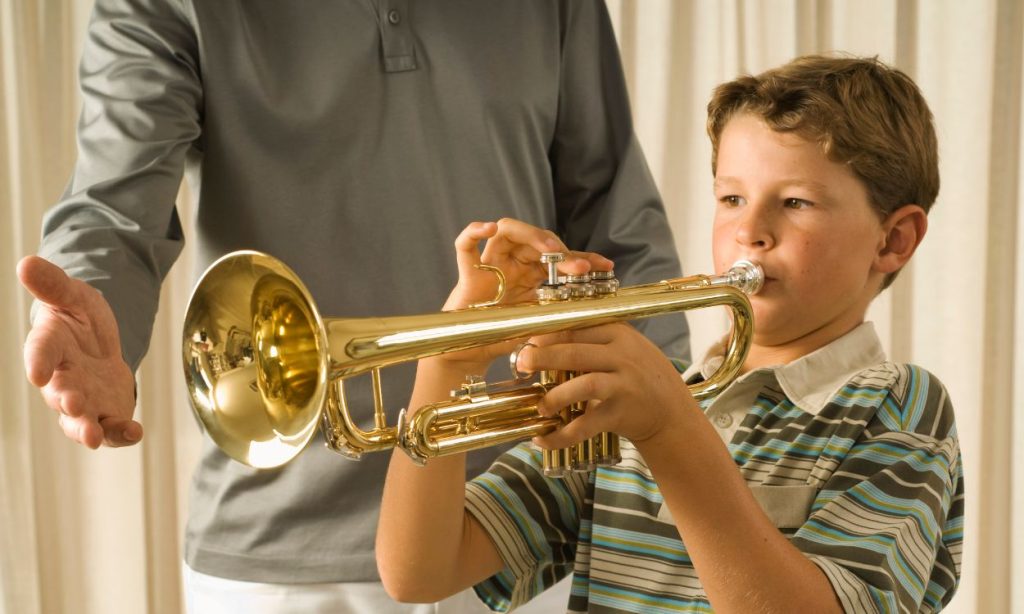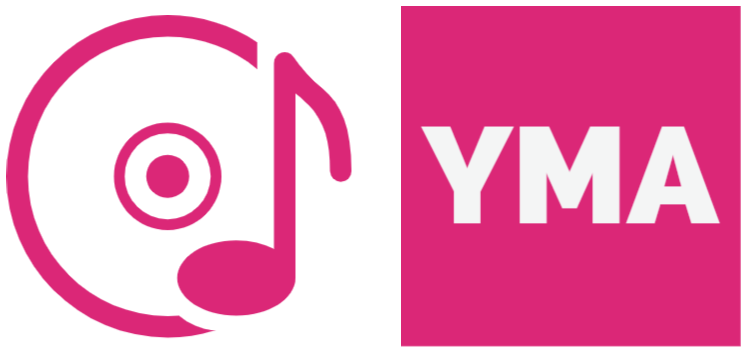Want to have more control over your sound and feel? What helps you is a relaxed throat. We’ll show you exercises for an open throat and explain how to avoid the dreaded vocal cord lock.
Ideal playing technique on the trumpet is composed of various components. Apart from the sensible instrument and the secure fingering technique, these are mainly physical aspects. Sounds amazing, but it remains a fact: your actual instrument is your body; the trumpet is the medium with which you send your sounds into the world.
The better you master yourself, the more you grow together with your instrument. And the more optimally the two of you form a unit, the more ideal your sound will be. Very important here: open your neck so that the air can flow through you unhindered. Here are a few thoughts, tips and throat exercises for barrier-free air flow:
Open throat with intentionally provoked almost yawning
Tip No. 1 is: Make your throat including pharynx, oral cavity and palate very wide. Open your lower jaw, upper jaw and throat until you almost (!) start to yawn. This is a physical automatism, a reflex. The requirement in this exercise is: you want to imitate the movement of tiredness, but not actually start yawning.

This is a boundary that is not easily discernible at times. With a little practice, you’ll open your throat without feeling the yawn stimulus. What is as paradoxical as it is interesting is that while you actually subconsciously resist this motion sequence when yawning in real life, it is absolutely desired when opening your neck – up to the limit mentioned above.
I breathe, therefore I play
In the course of your freshly begun trumpet playing life, you will repeatedly encounter the statement “open throat” or “open pharynx”. Although neck and throat are not in the least anatomically synonymous, these two terms – roughly speaking – mean the same thing. Musicians are not perfectionists when it comes to body knowledge.
Be that as it may, in order to achieve this, you must be aware that the throat and pharynx cannot exist or even function without the rest of your body. They are not solitary satellites. All parts of the body are connected to each other. This includes the tongue, the palate, the vocal folds, as well as the ribs, the lungs, and even your posture from your shoulders to your pelvis to your feet.
This means that if you want to open your throat, you have to be relaxed or even tense in a controlled way, in complete lifelikeness. It is an interplay of muscles, tendons and much more. Just imagine that you are a trumpet.
Ventilation training from the hardware store – rubber taste included
Here’s another exercise straight from the hardware store or nursery you trust: Either run yourself into one of those stores where hardly any salespeople know what’s on the next shelf, or send your parents off. They were just about to dig around in the garden for the annual neighborhood challenge for the prize-winning giant geranium.

They should get you a piece of garden hose with a diameter of about 2.5 cm. You’ll stick that in your mouth. (No, not down your throat and certainly not deeper; you don’t want to pump your own stomach, after all). Now take a deep breath in and out. Like a diver in a dry dock. As a result, you will train your breathing and at the same time open your throat and pharynx. Imagine you are a geranium.
See Also:
- 10 Essential Tips For Caring For Your Trumpet
- Mastering The Trumpet: Tips And Techniques For Improvisation
Off to the vegetable section: the power of imagination
Imagination is everything: Imagine you have a hot potato in your mouth. Starting from the oral cavity, you make everything wide, after all, you don’t want to burn yourself. It’s this idea of reality that intuitively sets everything from the palate to the vocal folds to the pharynx and ultimately the throat to a wide-open position. The imaginary potato has already done its reliable job.
Now you just have to be careful not to yawn again. In the same way, you can create the feeling that you yourself are filling up all this available space by providing more and more room and not giving throat & co. any chance to contract in a pointy-mouthed way. Your imagination becomes your individual airbag in your head. So, to stay with the metaphors: Imagine you are a hot potato.
Gargle yourself trumpet fit

Fascination cold; surely you have had a sore throat. The appropriate remedy was gargling with cold chamomile tea and other uncomfortable substances. If you imitate this movement, i.e. gargle from deep in the throat, while still sounding a rolling “R” if possible, you will open the throat and thus also the neck as if by itself. Gargling doesn’t work without this reflex, so it’s a good way to practice.
Held out notes do not blow, but breathe
When you blow a note, this punchy style of playing – especially for beginners – ensures that the airflow is focused. Similar to a digital camera or a spot with a tightly centered focus. The sound will potentially be quite loud due to this bundling, but at the same time static and constricted. Similarly, it’s in your throat and back of your throat.
Opening up your throat, however, is the confident goal. Try it by specifically not blowing the held out notes, but breathing them. When you breathe, not only does more air flow with it, it also comes from further inside and deep within. As you continue to practice this technique, make an effort to control the “breathed” breath flow. Your tone will become softer, more harmonious, and at the same time more controlled.
Blow paper on the wall
Next variation in the training program for the goal “open throat”. Take a simple sheet of paper, hold it against the wall and fix it with blowing through a mouthpiece at a distance of about 5 cm. Hold it against the wall using only your breath. Do not stick, do not take it in your fingers.

Only through your deep breathing should the piece of paper cling to the wall without sailing towards the floor. This can only work if you activate all the existing cavities in your mouth, throat and pharynx. You will feel this intuitively. The outer target ensures that the air spaces become large and wide.
Circular breathing – breathing magic made simple
For a basic understanding of free-flowing air, there’s one thing you need to know: If you hold your breath, your throat and pharynx close up. So the declared goal must be not to hold your breath. Not even between inhaling and playing; not even briefly. That doesn’t work? Yes, it does! It just takes a little practice until it becomes second nature to you.
The magic word is “circular breathing”. It’s not about inhaling continuously until your lungs implode. The tongue pushes the air into the trumpet, and at the same time you breathe in or out through the nose. As an introductory exercise, take a sip of water in your mouth. While you inhale and exhale through your nose, your tongue pushes the water out of your mouth. Have fun spitting.

In the next step, switch from water to air. That’s exactly what you’re now sending into your instrument via your tongue, while your nose is happily breathing away. You will automatically open your throat due to the permanent nasal breathing.
Controlled breathing is a health factor
Has anyone ever told you that playing the trumpet is good for your health? That’s true, definitely. But ask yourself why that is. It’s certainly not because you have a multi-bent piece of brass in front of your nose. It’s because the instrument helps your whole body and especially your breathing technique. And breathing is healthy. At least if you do it right.
The vast majority of people breathe incorrectly. Too short, too shallow, no support from the diaphragm, simply uncontrolled. The common person next door doesn’t even know where the diaphragm is located. You, however, already know this and have understood that the support does not come from the throat and you have to open your throat, gladly as wide as a barn door.
Breathing in and out is actually natural
What babies still do right instinctively – because they are innate – becomes worse and worse as they grow older. Wind players and singers are clearly on a positive path. After all, the coherent inhalation and exhalation is the basis for their respective instrument. Be it the voice itself, or the “extended voice” like the trumpet.

The basis for the formation of beautiful and harmonious tones is to open the throat. If you constrict the breath, narrow it and take away its space, you will hardly achieve melodious results. But this can be trained just like the embouchure. Opening the throat means experiencing the body. After all, nothing works in our lives without breathing air.

